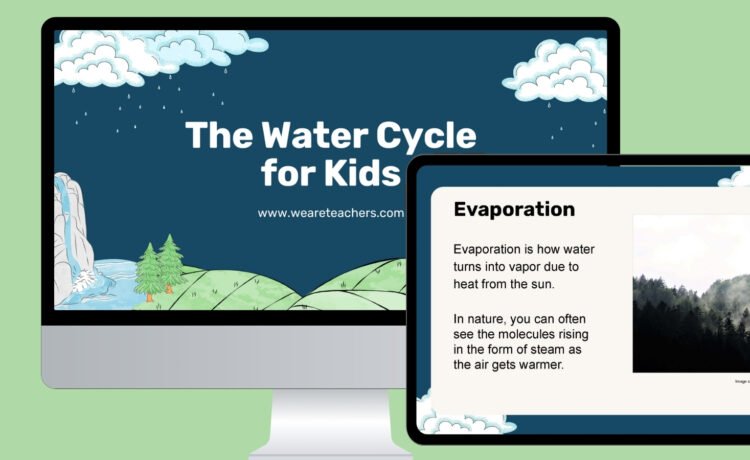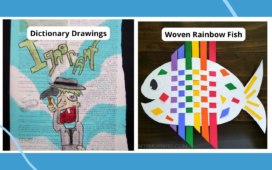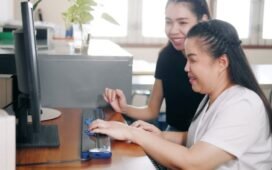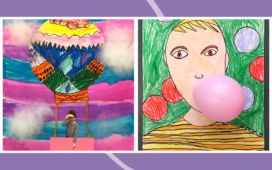When we teach kids about the water cycle, we reveal the fascinating process of water transforming and traveling across the globe. When kids observe the water cycle’s stages, they engage in scientific inquiry. Plus, it helps them understand the importance of conserving water and protecting natural resources.
Ready to get started teaching your students about the water cycle? Check out our kid-friendly explanations and video below. Then grab our free Water Cycle for Kids Google Slides to use in your classroom.
Why is water a vital resource?
About 71% of the Earth’s surface is made of water. About 97% of that water is salt water and 3% is fresh water. We can’t drink salt water or use it to water crops. Since there is a limited amount of fresh water on Earth, we need to take care of this vital resource so there is enough to sustain life here on Earth.
What is the water cycle?
The water cycle is the different stages through which water moves and flows around the Earth.
What are the stages of the water cycle?
There are seven stages in the water cycle:
- Evaporation
- Condensation
- Precipitation
- Collection
- Runoff
- Infiltration
- Groundwater
Stage 1: Evaporation
Evaporation is how water turns into vapor due to heat. In nature, this heat is caused by the sun. You can see evaporation in action in your home when you are boiling a pot of water. Notice how the steam rises and seems to disappear in the air. But the water hasn’t disappeared: It’s evaporated into smaller particles that we can’t always see. In nature, you can often see steam, too, as water molecules rise into the air as it gets warmer.
Stage 2: Condensation
Condensation is when water vapor cools and forms clouds in the atmosphere. Notice the different types of clouds that can form in the sky. Some are big and puffy while others are thin and wispy. You can also see condensation happen at home. When you have a glass of ice water, notice what happens as it slowly warms up. Over time, water molecules form on the outside of the glass, making beads of water, much like the clouds are formed in the sky.
Stage 3: Precipitation
When the water molecules become too large for the clouds, they are released from the clouds in the form of precipitation. The air temperature, altitude, and location in the world are contributing factors to the type of precipitation that will form.
Stage 4: Collection
Collection of water that falls from the clouds happens in lakes, rivers, and oceans. The collection of water helps the living things that call these places home. From here, evaporation can happen again and repeat the water cycle, or continue on to the next stage. You can collect precipitation at home by setting a bucket outside the next time it rains. This water can be used to help water plants outside instead of getting more water from the faucet.
Stage 5: Runoff
Runoff is when there is more water than the land can soak up. The extra water moves on the top of the ground into other bodies of water. Streams, creeks, and ponds are some places that collect runoff water.
Stage 6: Infiltration
When the ground doesn’t have too much water in once place, it can soak it up, which is called infiltration. This replenishes groundwater and helps plants grow. If you water your grass at home with sprinklers, you are adding infiltration. The ground soaks up the water in the area, which helps your grass grow and also adds more to the groundwater below.
Stage 7: Groundwater
Groundwater is stored underneath the earth’s surface. It comes out through cracks in the earth’s surface or moves its way back into the ocean or another body of water. Humans can access groundwater by digging a deep hole in the earth and creating a well. While not as common today, this used to be the way people would gather fresh water if they didn’t live near a large body of water.
Other Ways Water Moves Through the Water Cycle
Plants can release water into the air.
This is called transpiration. Plants are also part of the water cycle. They soak up water from the ground and also release water into the air, which is another form of evaporation.
Ice and snow can evaporate into the air before melting.
This is called sublimation. This is the opposite of deposition.
Water vapor and gas can turn into a solid, like ice or snow.
This is called deposition. This is the opposite of sublimation. Typically, a liquid will turn into a solid first. But in this case, think of when it’s a cold night and there is frost on the grass the next morning. It didn’t rain or snow, but the water vapor got cold enough to turn into frost.
Get Your Free Water Cycle for Kids Google Slides
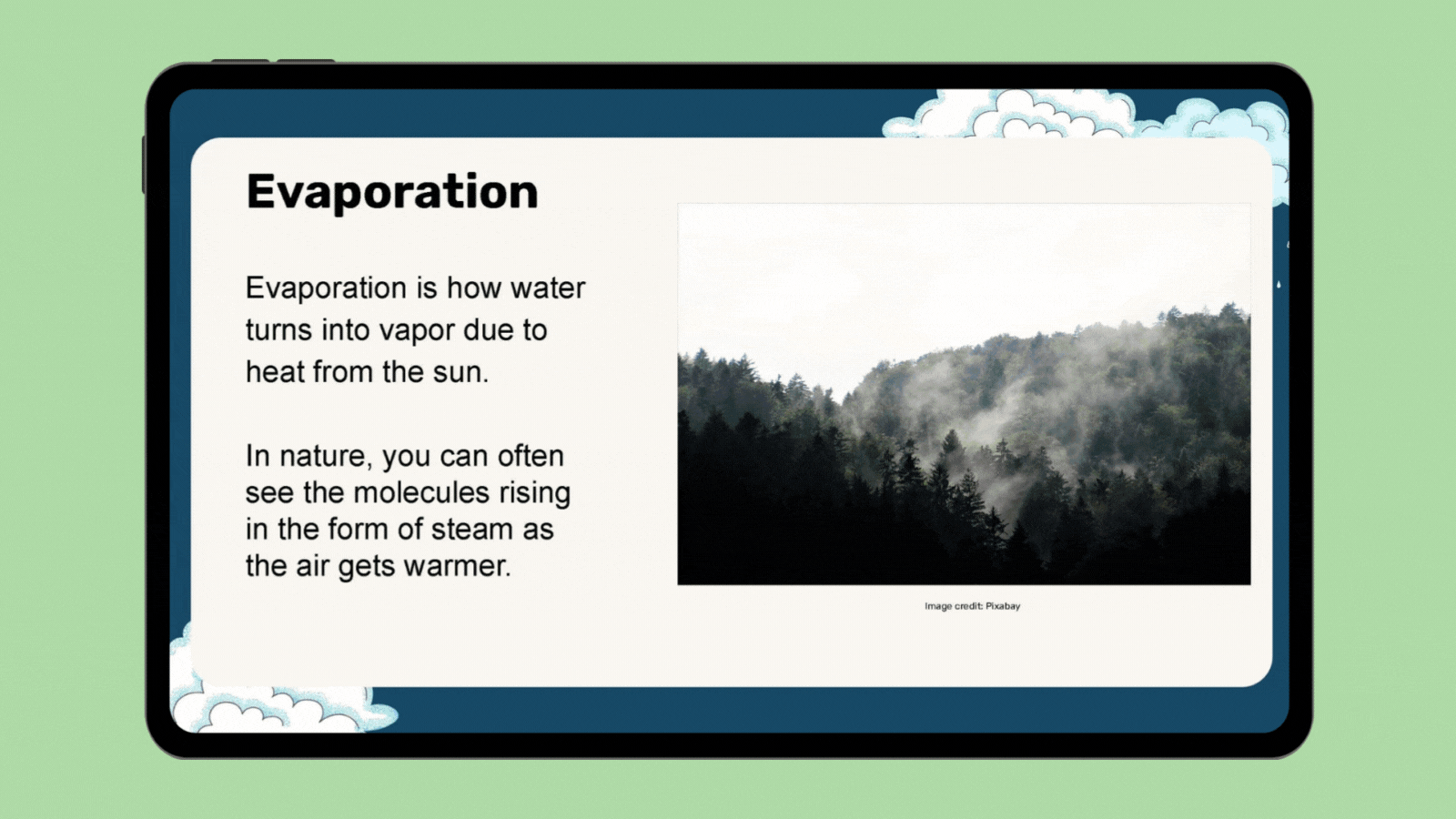
Just enter your email address on the form on this page to grab our free Water Cycle for Kids Google Slides to use in your classroom.

